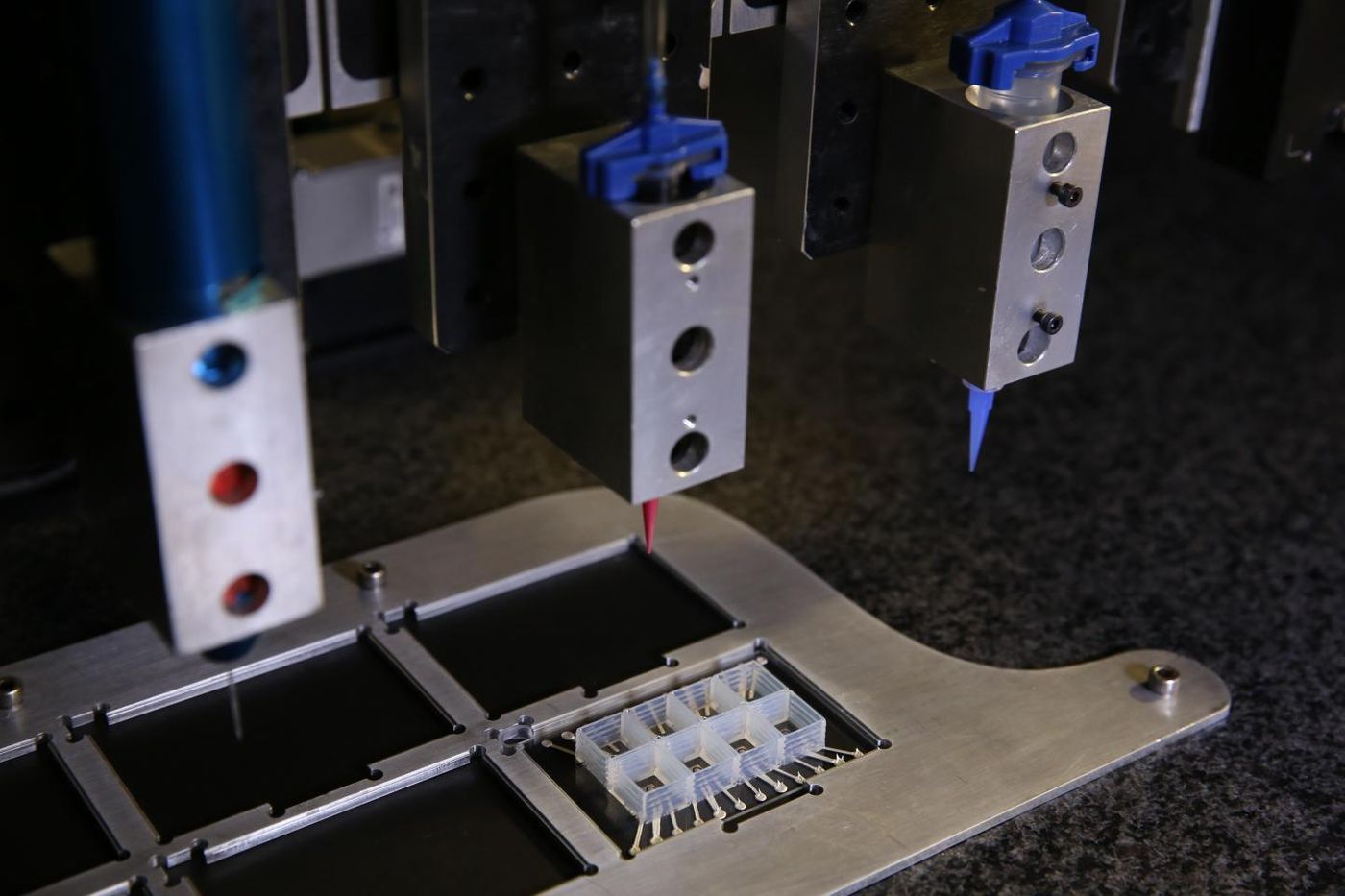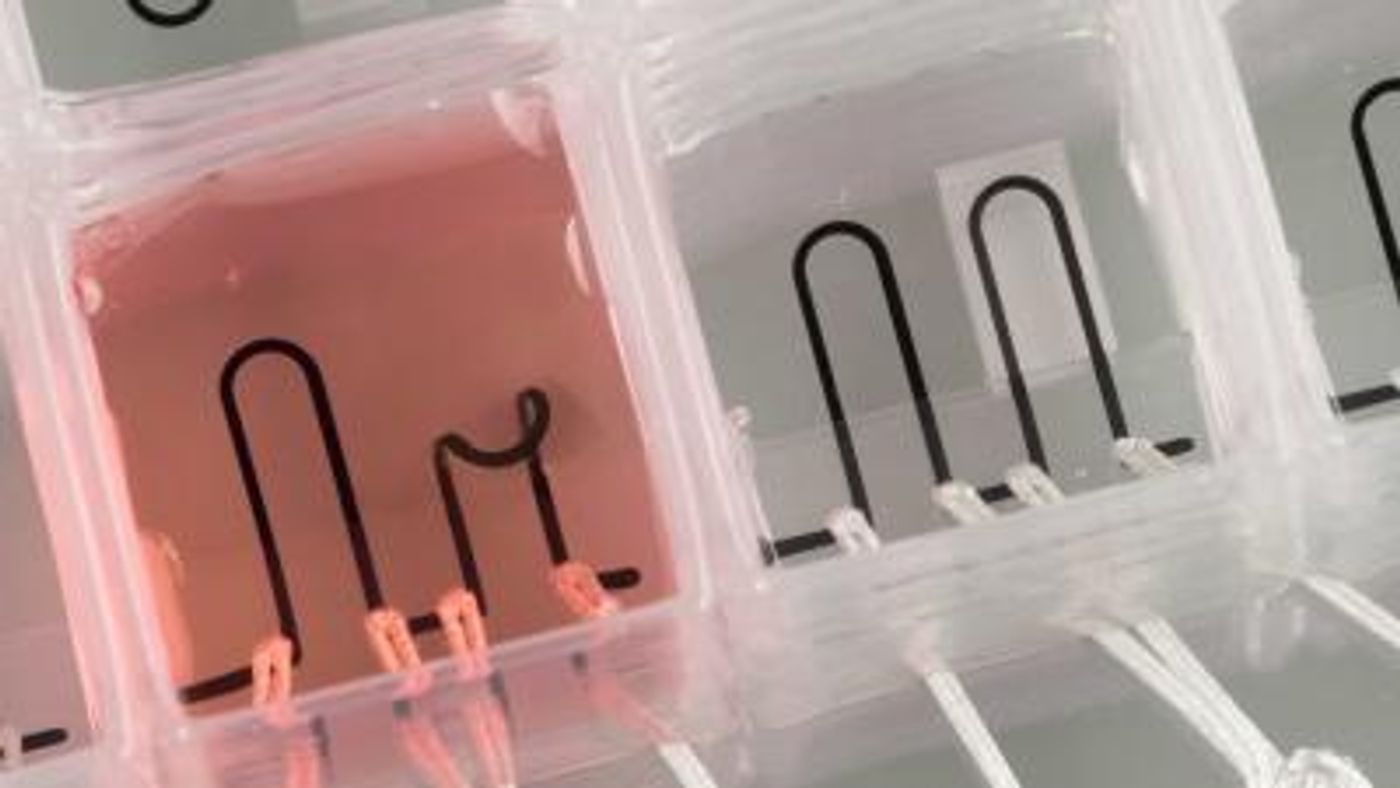Studying the contractile forces of the human heart just got monumentally easier with the newest technology: 3D-printed heart-on-a-chip.
Harvard University scientists have almost perfected organ-on-a-chip technology with their newest study, showing how the newest chip can be used to mimic the structure and function of human cardiac tissue. "This new programmable approach to building organs-on-chips not only allows us to easily change and customize the design of the system by integrating sensing but also drastically simplifies data acquisition," said first author of the
Nature Materials paper Johan Ulrik Lind.
The new technology improves upon previous organs-on-chips by using digital manufacturing, six different 3D-printing inks, and ultra-sensitive sensors. So far, scientists have been able to design organs-on-chips for lungs, hearts, tongues, and intestines.
The 3D-printed heart-on-a-chip, also called a cardiac microphysiological device, can be used to track beating heart tissue, making it easier to study contractile strength as well as how cardiac tissue reacts to drugs and toxins, without relying on animal studies.
"Researchers are often left working in the dark when it comes to gradual changes that occur during cardiac tissue development and maturation because there has been a lack of easy, non-invasive ways to measure the tissue functional performance," said Lind. "These integrated sensors allow researchers to continuously collect data while tissues mature and improve their contractility. Similarly, they will enable studies of gradual effects of chronic exposure to toxins."

The recent Harvard study improves past organs-on-a-chip by making fabrication faster, reliable data collection easier, overall making the technology less expensive and less time-consuming. “By developing new printable inks for multi-material 3D printing, we were able to automate the fabrication process while increasing the complexity of the devices,” explained co-author Travis Busbee. Researchers demonstrated the efficacy of the device by conducted drug studies and studies of the changes in contractile stress of engineered cardiac tissues.
The newest advances in 3D-printing technology in the present study are the epitome of the future of precision medicine. Soon, scientists will be able to design organs-on-chips to specifically match a certain diseases or individual’s cells, making it infinitely easier to treat diseases like cardiomyopathy and many others.
Source:
Harvard John A. Paulson School of Engineering and Applied Sciences
Images: Johan Lind, Disease Biophysics Group/Lori K. Sanders, Lewis Lab/Harvard University










